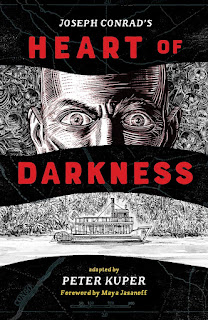Snow, Glass, Apples by Neil Gaiman and Colleen Doran
I’ve mentioned the short story “Snow, Glass, Apples” before – it’s both one of Neil Gaiman’s best, most pointed short pieces and one of the most successful of the Ellen Datlow/Terri Windling-inspired burst of revisionist fairy tales from the early 1990s. (I see that my memory was slightly false – I thought it originally appeared in one of the “Red As Blood” anthologies, but it was a standalone chapbook and then reprinted in the 1995 Datlow/Windling annual.)
As so often with successful things, it’s part of different clusters – all those anthologies of nasty fairy tales, first, and then more recently an odd program that seems to be trying to turn every one of Gaiman’s best stories into individual graphic novels. (See How to Talk to Girls at Parties and Troll Bridge ; I’m pretty sure there have been several others that I missed.)
So, in 2019, Colleen Doran adapted “Snow, Glass, Apples” (the short story) into the standalone graphic novel Snow, Glass, Apples – which is what I’ve just read. Like most of the “Neil Gaiman Library” and similar projects (the Coraline adaptation, the two-volume Graveyard Book adaptation.) that I’ve seen, it’s a very respectful adaptation, using as many of Gaiman’s original words as possible and just illustrating them rather than attempting to transform the prose story into something new.
Which, somewhat ironically, is the opposite of how Gaiman works when he adapts things – he’s always been deeply transformative – but he’s a Big Deal and his fans want Pure Gaiman, so I assume his editors and publishers know exactly what they’re doing.
Snow, Glass, Apples is thus pretty much exactly the short story, or at least very large chunks of the prose of that story (which is pretty short to begin with), illustrated in a detailed, mostly Art Nouveau style by Doran, on mostly flowing, panel-less pages full of gorgeous, evocative art. If you know the story, this is it, literalized and illustrated by Doran. If you don’t know the story, this is nearly as good a way to discover it. (I’m enough of a purist to insist on that “nearly” – the original precise prose is better.)
Reposted from The Antick Musings of G.B.H. Hornswoggler, Gent.




















